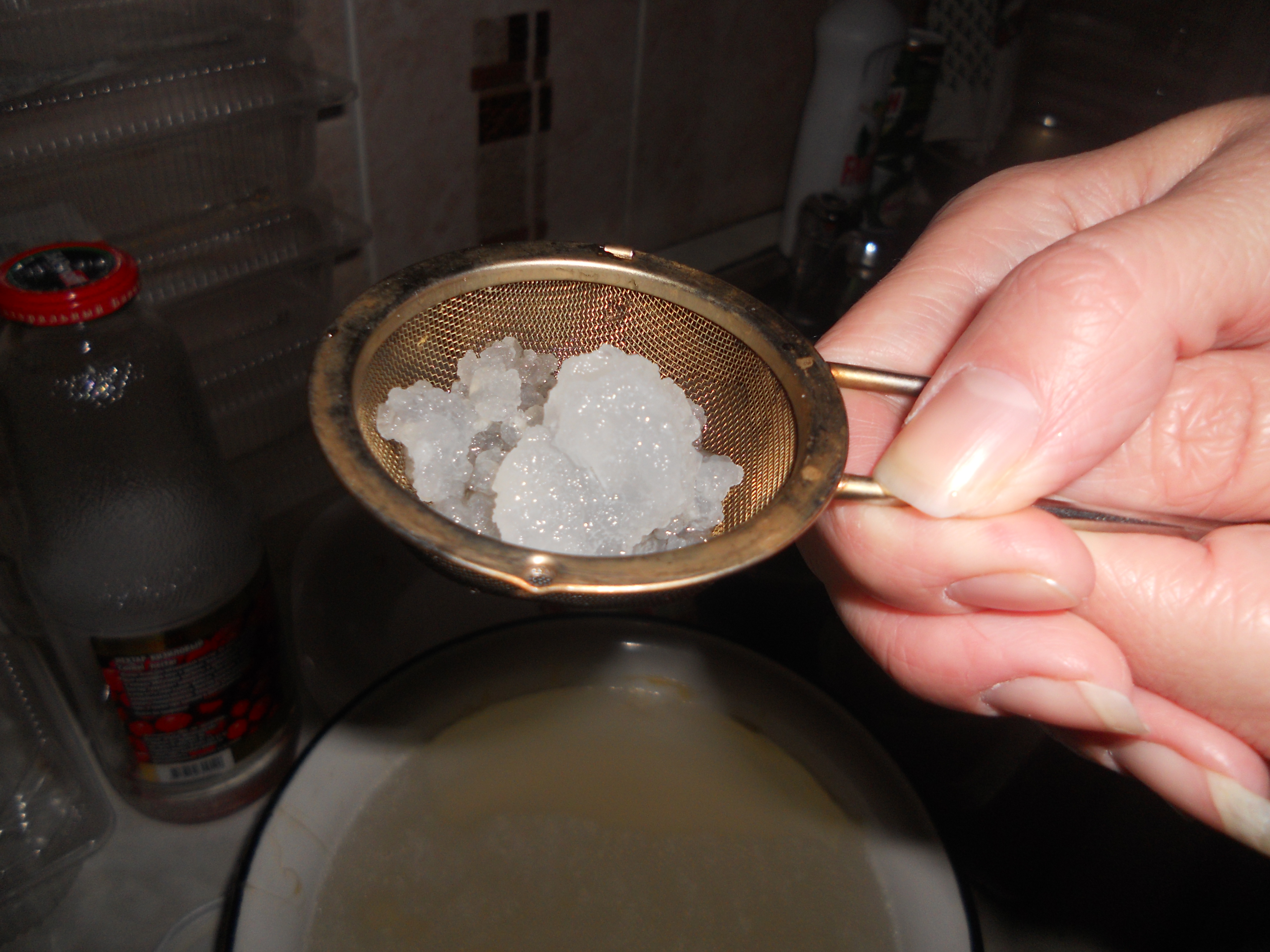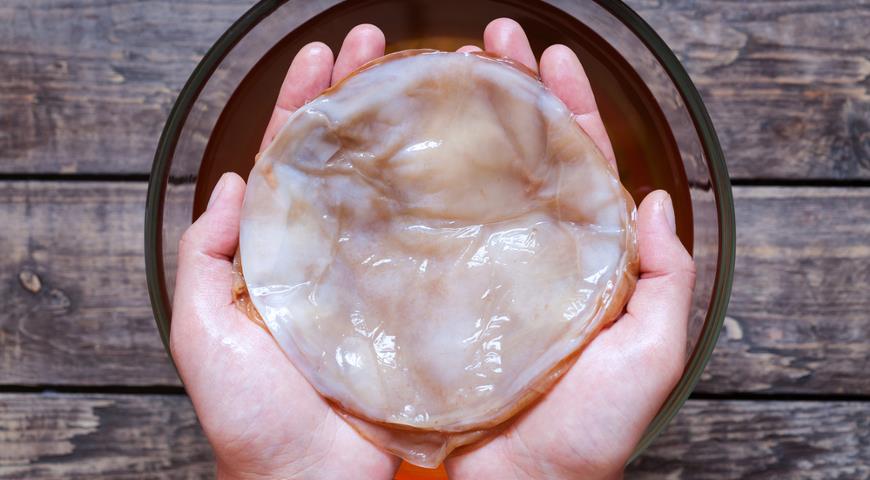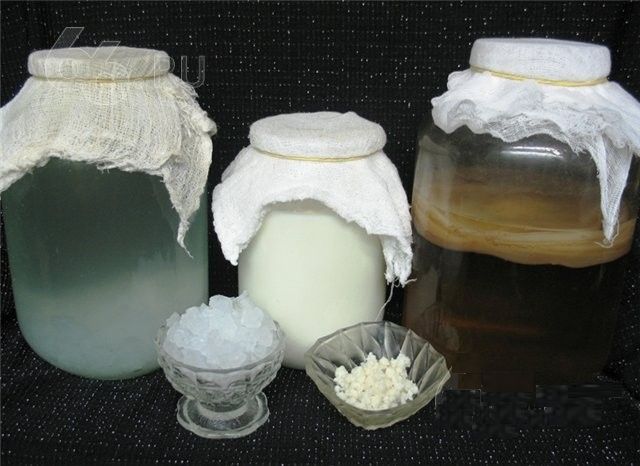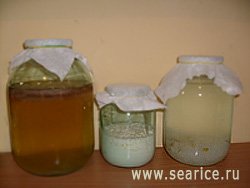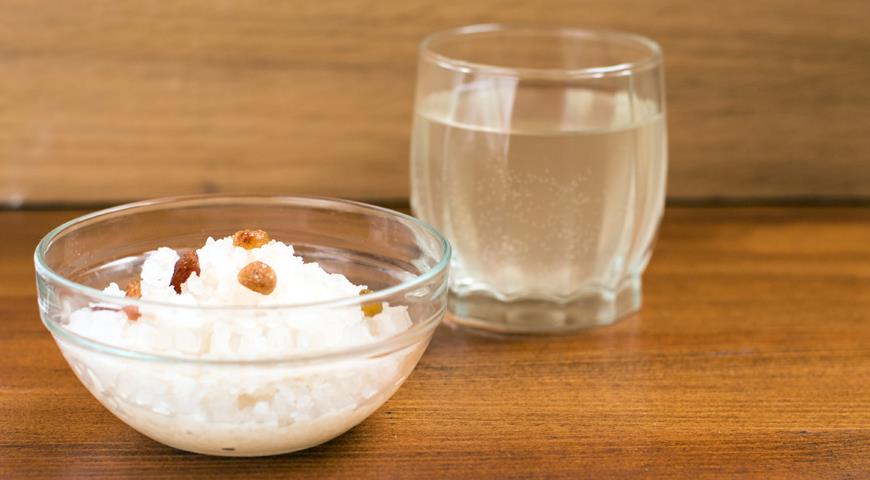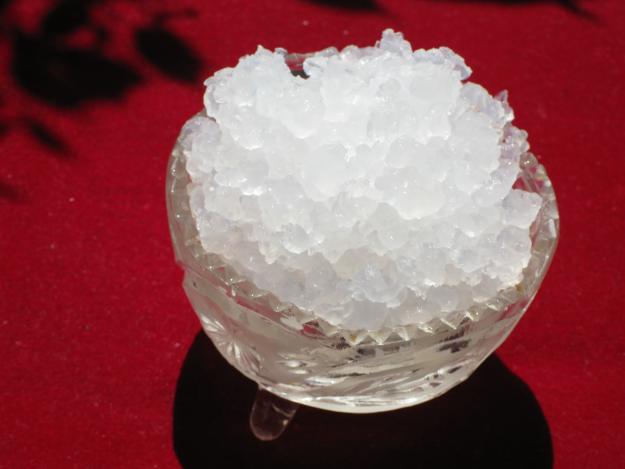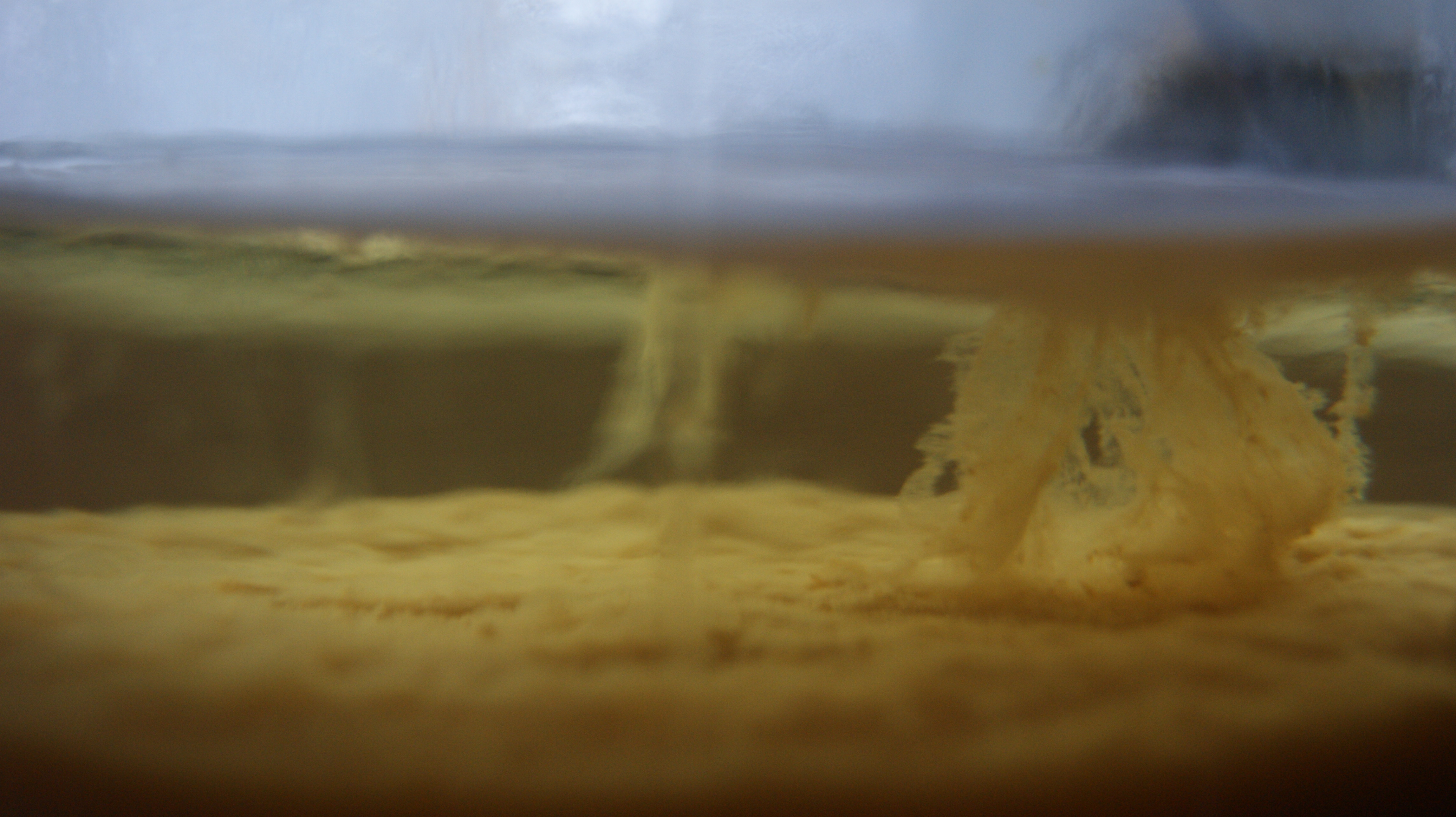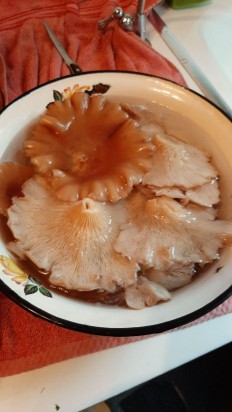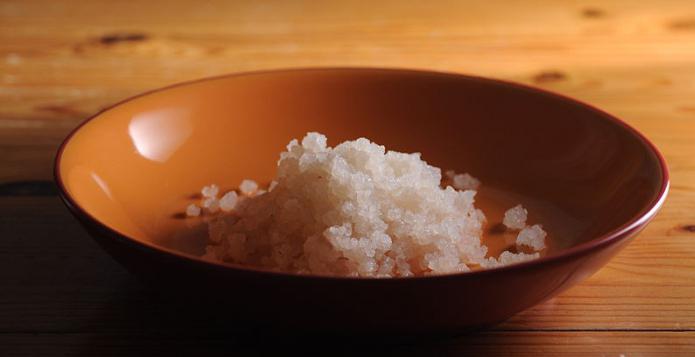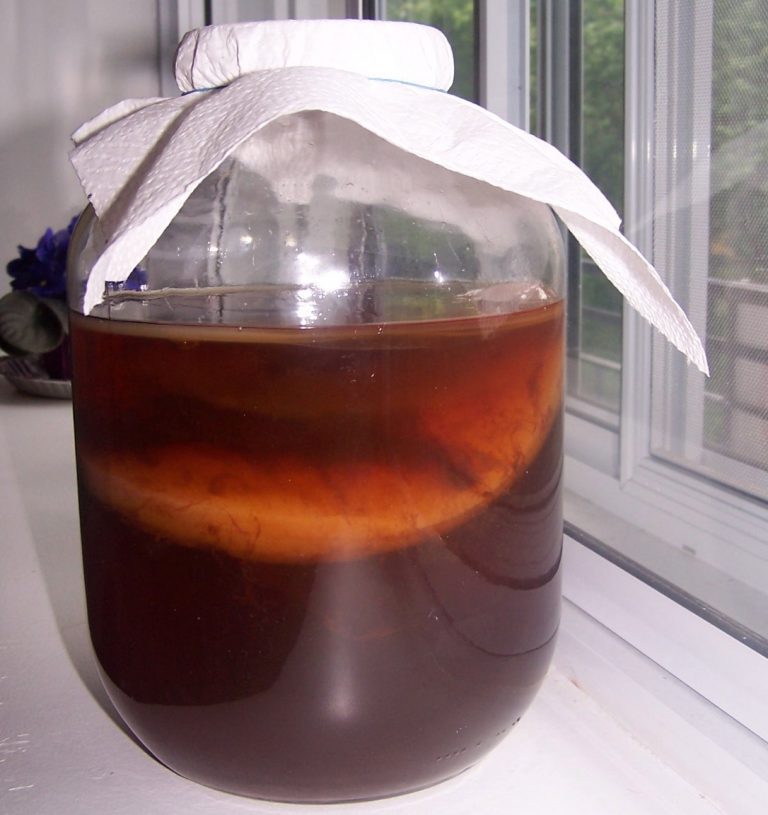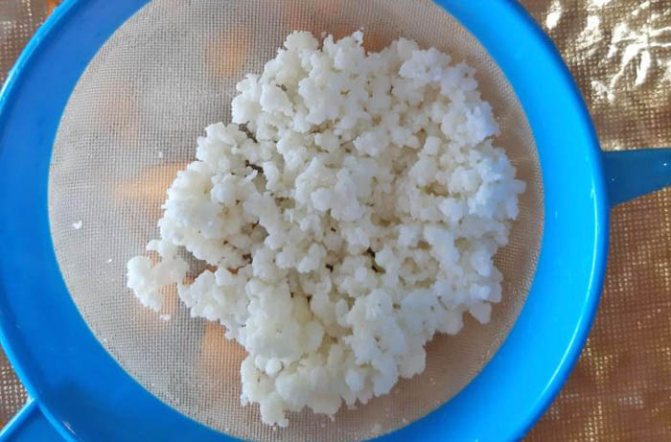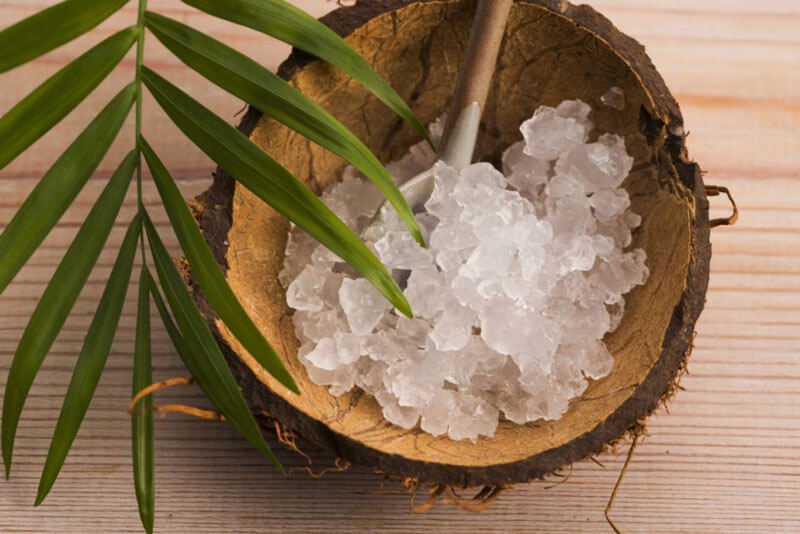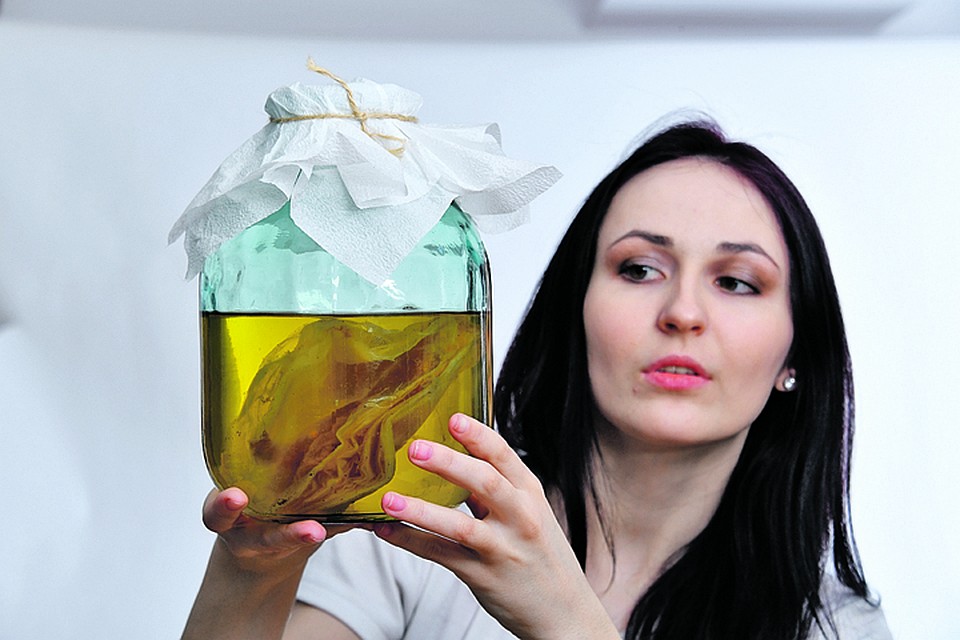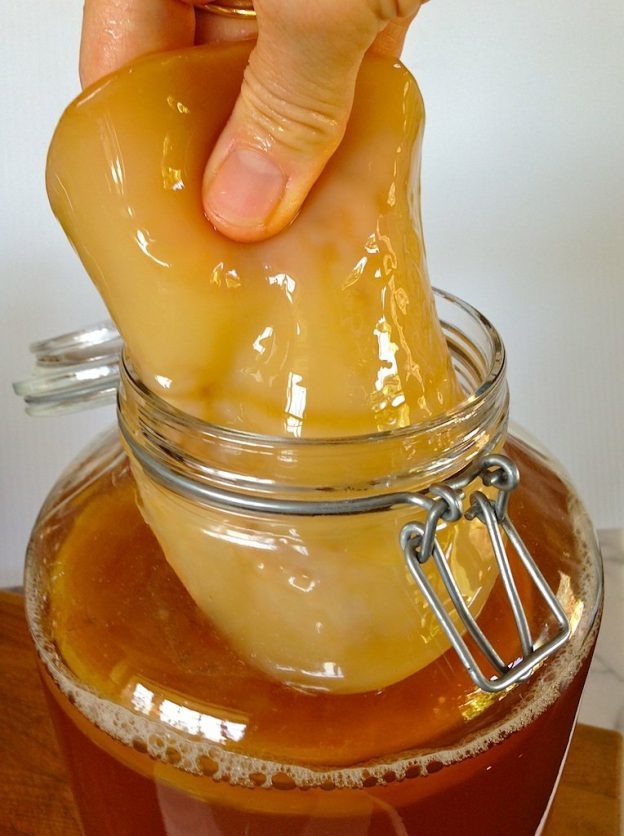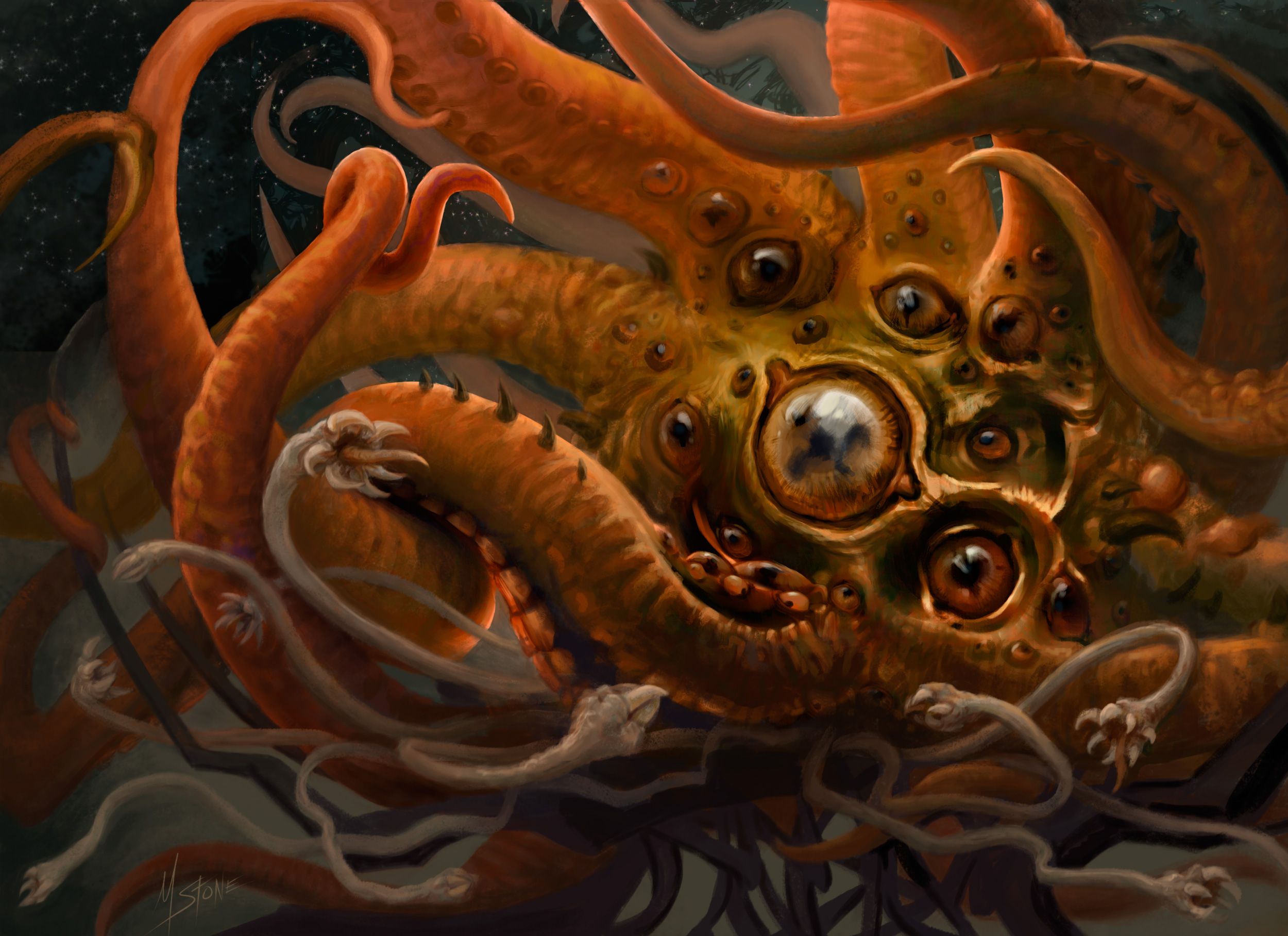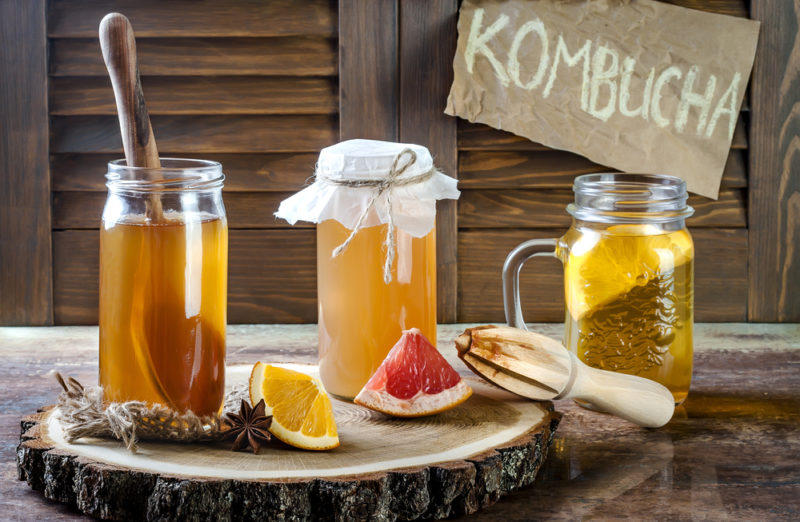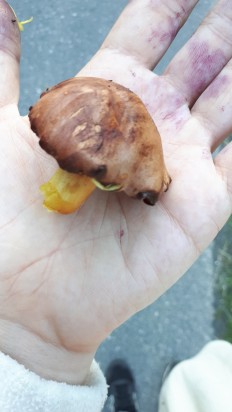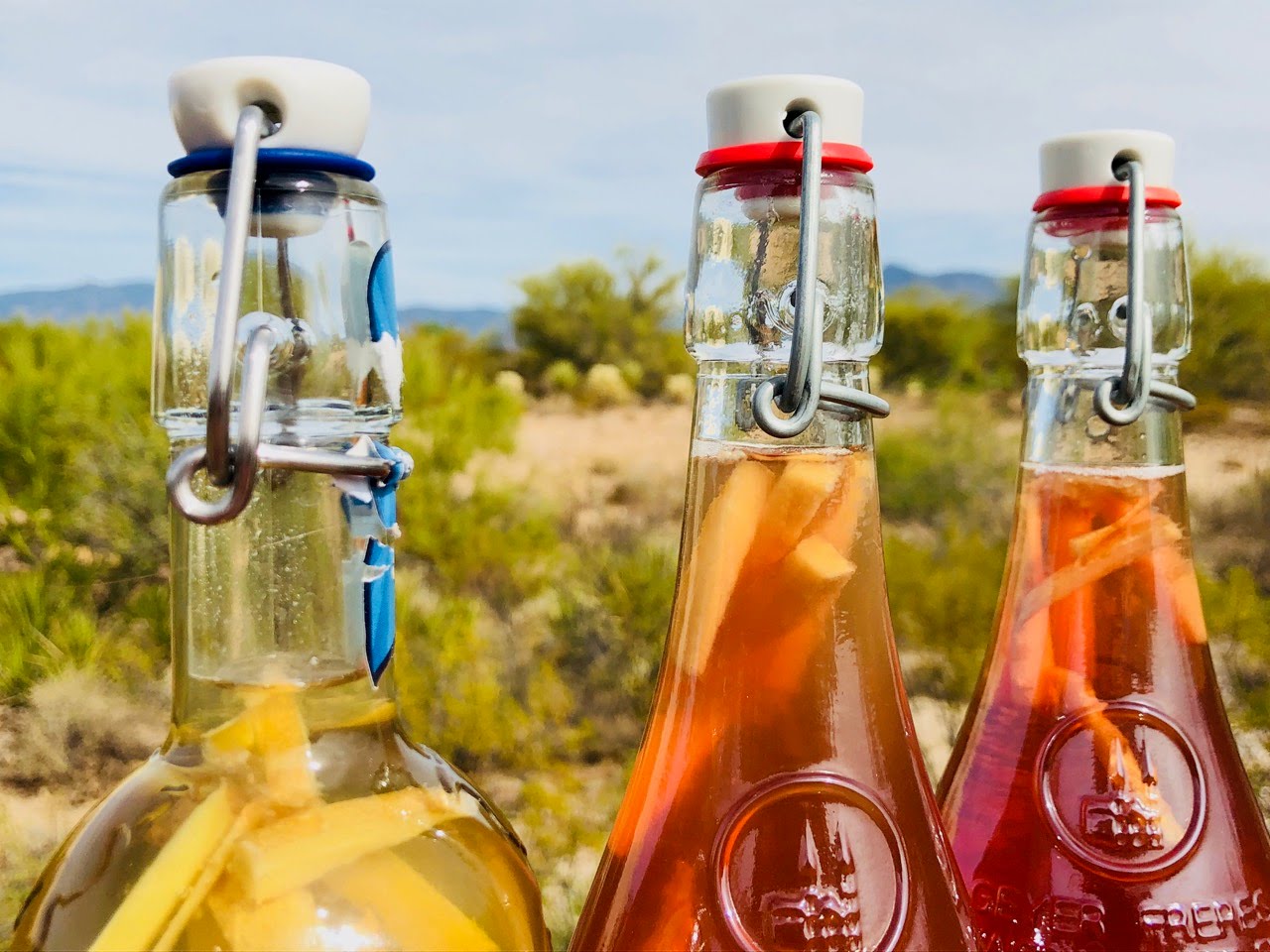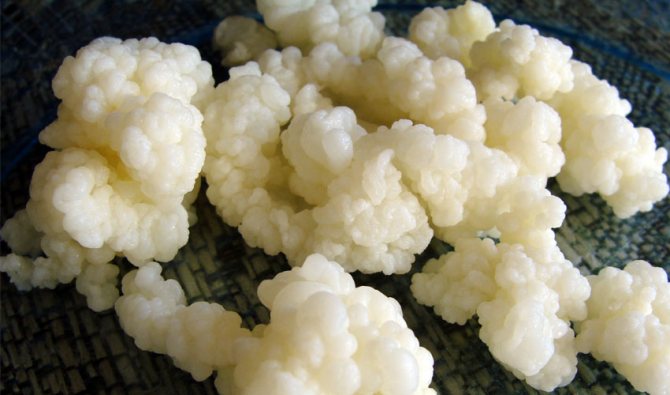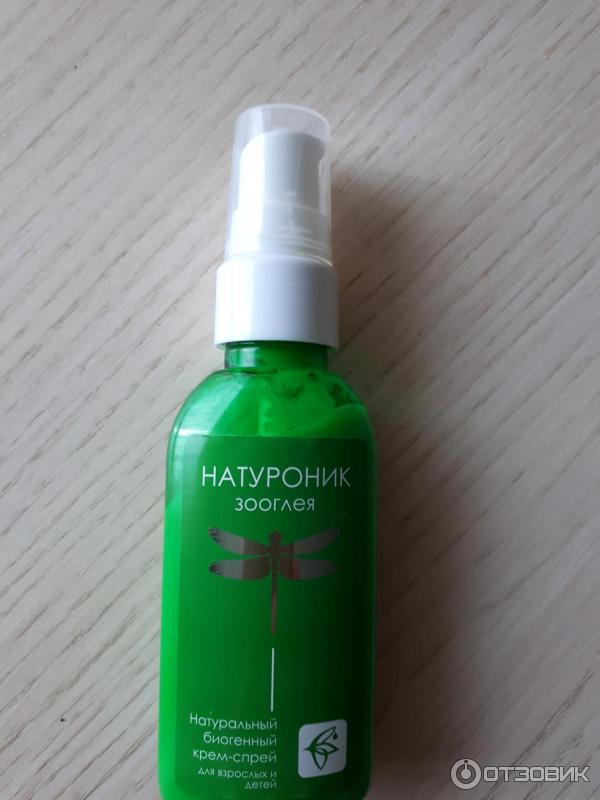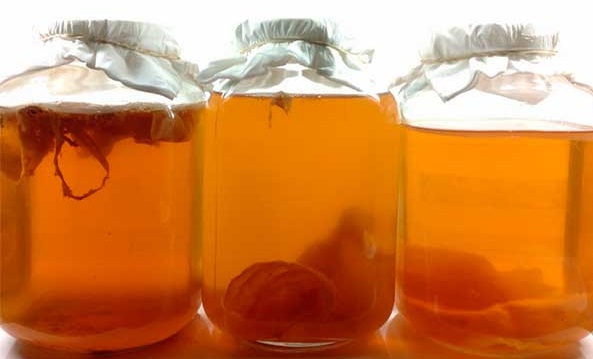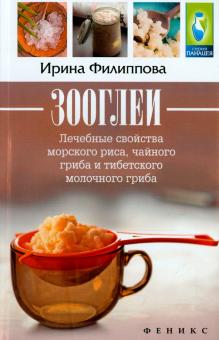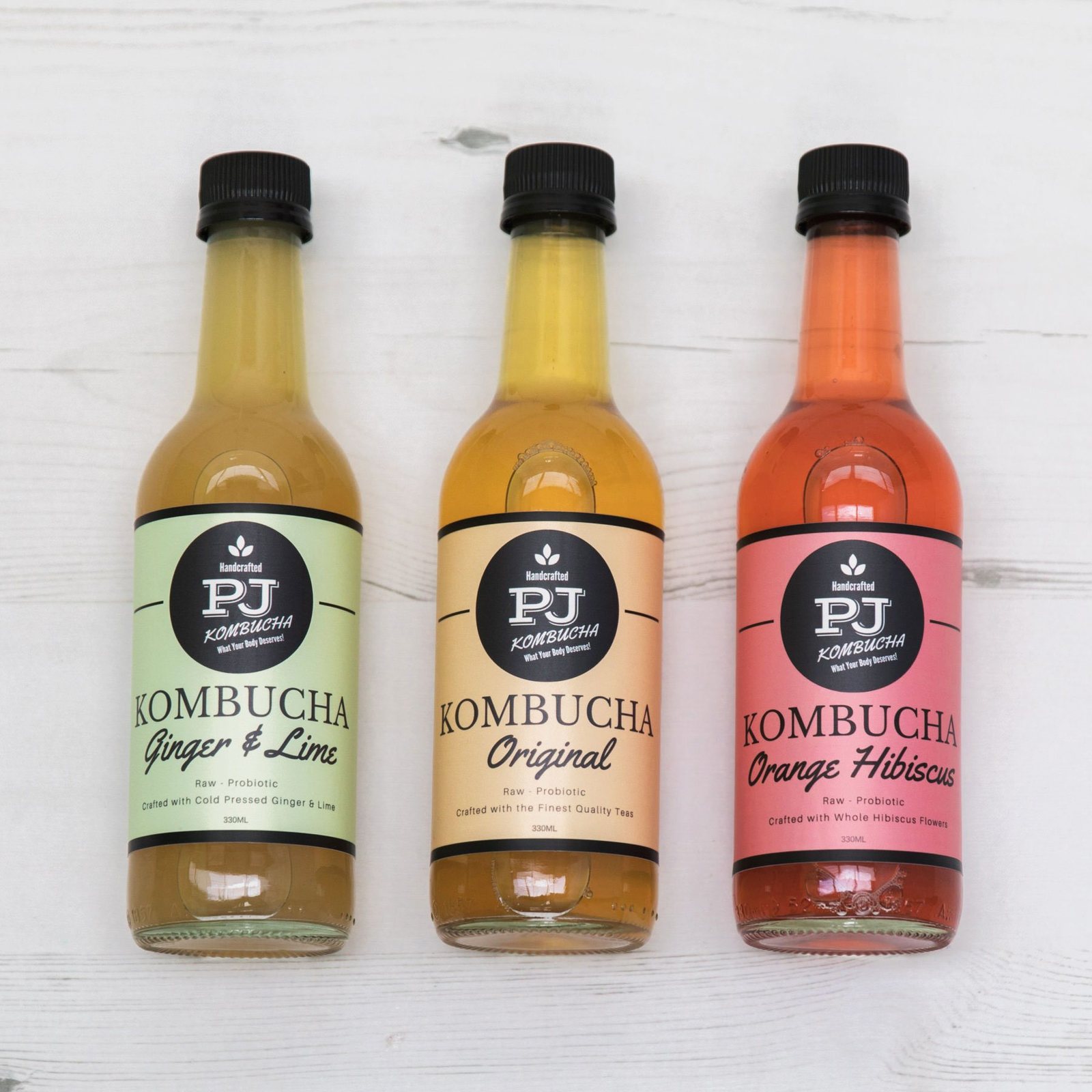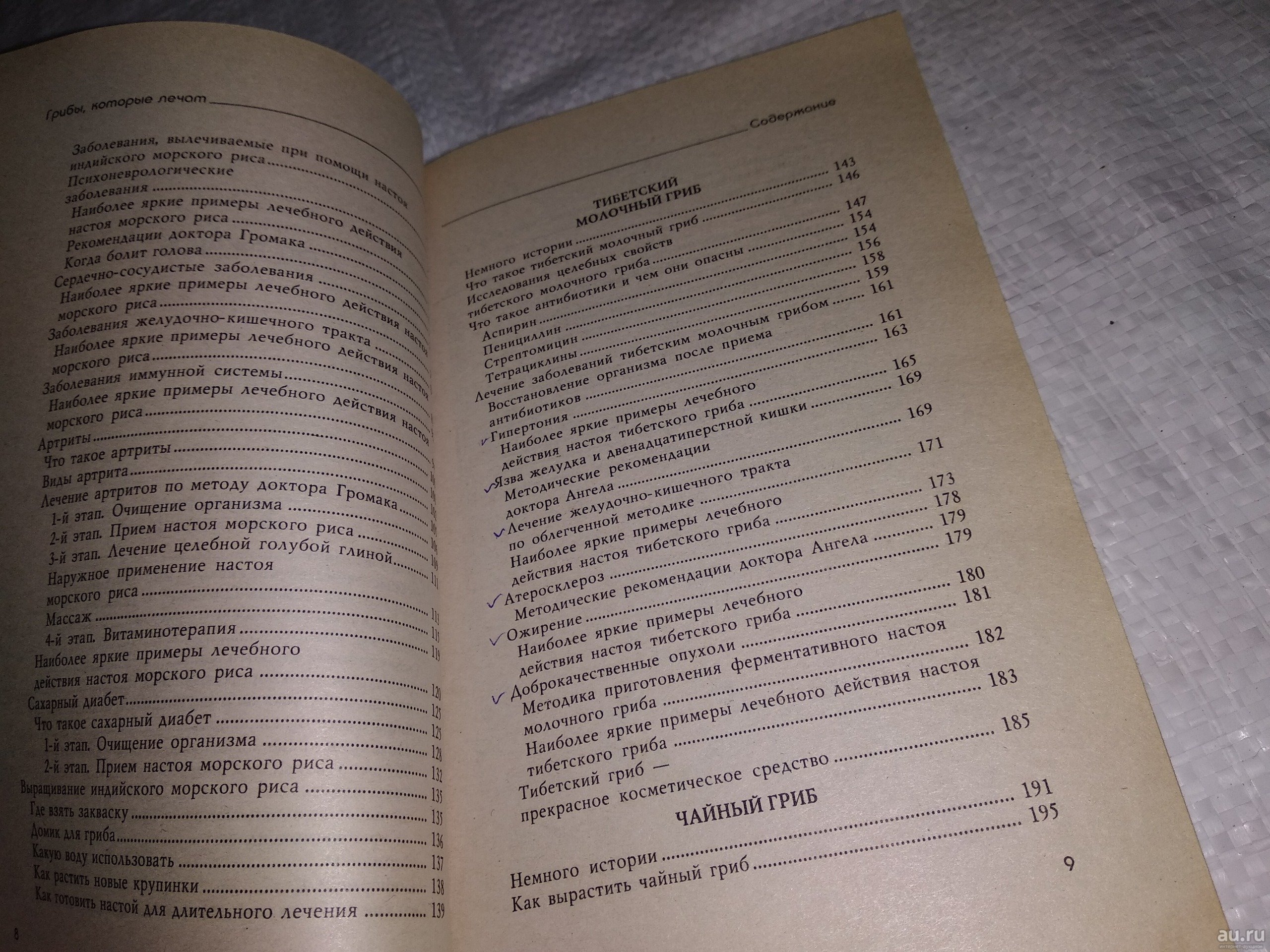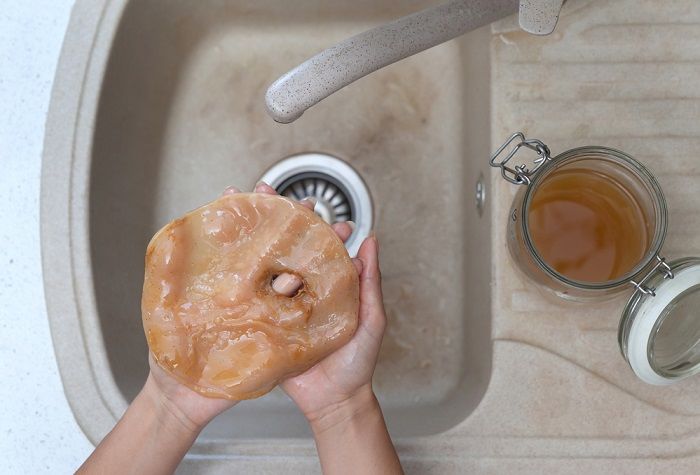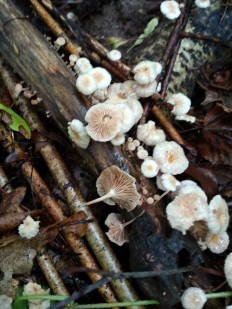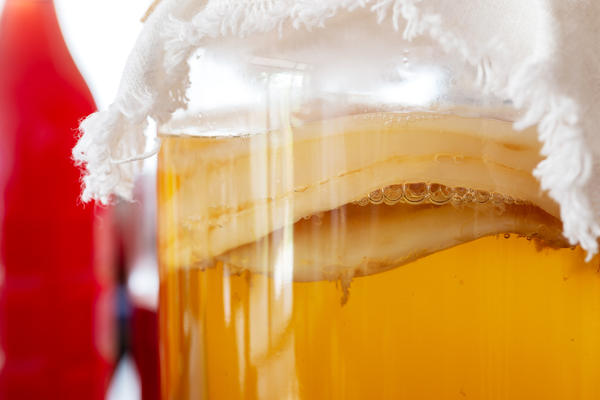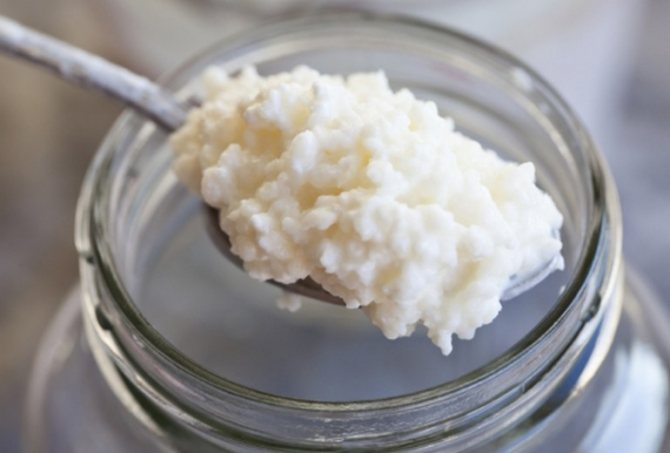Contraindications
Scientific research has not revealed any harm to the tea culture. External use of kvass is generally safe. In reasonable doses (up to 2-3 glasses per day), the infusion can be ingested by children, lactating and pregnant women. But it should be remembered that it is necessary to grow jellyfish in compliance with sanitary standards, using clean water and high-quality raw materials.
However, there are cases when you need to be careful or it is not desirable to consume a drink from a given culture:
- people suffering from diabetes mellitus, stomach ulcers or high acidity of the stomach;
- you can not use a peroxide drink, with a sharp taste or highly concentrated;
- you can not replace sugar with substitutes;
- drivers should remember that the mushroom does produce some alcohol.

Categories
- Uncategorized (60)
-
Health (260)
- Supplements and vitamins (11)
- Pregnancy (17)
- Medicines (16)
- Fitness (11)
-
Interesting (176)
- Feedback (83)
- Travel (14)
-
Beauty (254)
- Make-up (16)
- Hair (46)
- Diets (38)
- Cosmetology (9)
- Face (21)
- Men's care (2)
- Nails (6)
- Body (26)
-
Fashion (153)
- Accessories (22)
- Spring (1)
- Spring-Summer (24)
- Women's Fashion (12)
- Sprockets (15)
- Winter (1)
- Summer (12)
- Youth Fashion (5)
- Men's Fashion (5)
- Underwear (9)
- New Year (3)
- Shoes (8)
- Fall (10)
- Wedding Dresses (2)
- Style (8)
- Trends (3)
-
Recipes (372)
- Vegetarianism (33)
- Bakery (51)
- Hot dishes (114)
- Desserts (24)
- Multicooker (16)
- Holidays (32)
- Salads (24)
-
Family (242)
- Country house (10)
- Kids (72)
- Home (49)
- Pets (7)
- Relationships (25)
- Wedding (42)
What is Kombucha
A symbiotic organism of yeast and bacteria. Refers to the zoogley mushroom, otherwise it is also called tea jellyfish or Japanese mushroom. The scientific name (Medusomyces gisevii) is jellyfish. How it arose is not known for certain, because it does not exist in natural nature. But he was known to the Chinese for more than two centuries BC, for them he was an elixir of youth and health.
For the life of a culture, a nutrient medium is needed, which is sweet tea from the leaves of various herbs, tea or fruits. During the fermentation of sugar by yeast, carbon dioxide and ethyl alcohol are synthesized. Subsequently, with the help of bacteria, oxidative processes occur, and at the exit we have acetic acid. This creates a pleasant tonic drink that tastes like kvass.
The body of the fungus is a slimy, layered film. As it grows, it thickens and fills the entire surface. In everyday life, it is grown in glass containers.

Useful properties of kombucha
Kombucha gained prestige in our time thanks to the research of scientists who found that the drink obtained from the synthesis of mushroom culture has a positive effect on the human body.
It contains various acids, vitamins, microelements and enzymes that help cleanse from pathogenic microbes, which is important in the fight against infections and colds, and contribute to the treatment of diseases of internal organs. Gluconic acid balances metabolism and improves muscle activity
Also, mushroom kvass has excellent cosmetic properties:
- cleanses the epidermis;
- helps to narrow pores;
- heals burns, wounds;
- has an anti-inflammatory effect;
- regenerates, makes the skin firm and smooth.
For skin care, masks, compresses and wraps are used.
What is zooglea, types of zooglea
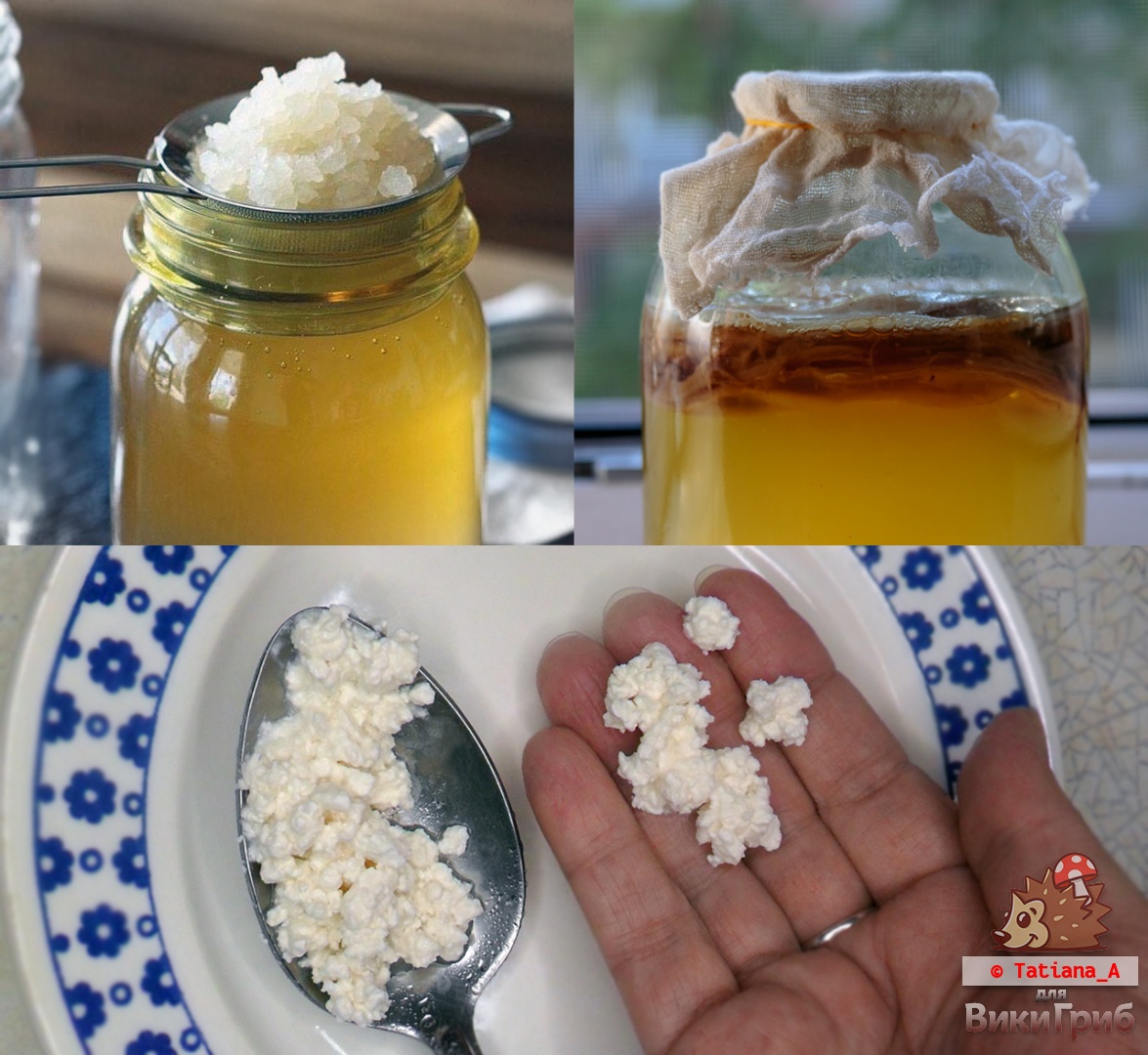
Zooglea is a living organism, a sticky substance released by bacteria when glued. When combined, bacterial cells form gelatinous mucous masses or films. Zooglea is the resulting symbiosis of a yeast fungus with an acetic acid bacterium.
Zooglea consists of polysaccharides, sometimes with an admixture of nitrogenous compounds. It is characteristic only for some (mainly aquatic) bacteria, in particular for the genus Zoogloea ramigera. Zooglea can be digital, coral, mesenteric, or some other shape. The appearance of Zooglea, apparently, is of an adaptive nature: due to its slimy consistency, the adsorption of nutrients necessary for the existence of bacteria from water is easily carried out.
In nature, there are a lot of varieties of Zooglea, however, only three species are domesticated and the most studied:
- sea rice
- tea mushroom
- milk mushroom
All three Zoogleys are completely different cultures, with their own characteristics and structure. The properties of all Zoogley are different, the only thing that unites them is the presence of acetic acid bacteria.
The history of all zoogles is amazing. Despite the fact that they are known from ancient times, scientists decided to seriously figure out what it is - these medicinal "mushrooms" only in the 19th century. First, foreign scientists discovered acetic acid bacteria in their base. One of the researchers - Glover - believed that this is just a kind of vinegar queens, with which from time immemorial vinegar was prepared.
Academician Bolotov conducted a lot of research on zoogles. He found that gastric juice dissolves not only dead cells, but also cells damaged by nitrates, free radicals, radionuclides, heavy metals, carcinogens ... gastric juice successfully dissolves even cancer cells. Thus, the body expels several hundred grams of dead cells per day.
The fact is that many in the body lack these acids. This is one of the reasons for the clogging of the body with dead cells, slags, toxins and other poisons, with as a result - various diseases. In terms of its healing qualities, Indian sea rice is the leader among them. This is because there is an enzyme enhancer Q-10 in his drink. In the body, this enzyme is synthesized in the liver, but with age, the ability to produce Q-10 decreases, and you can replenish its reserves by drinking Indian sea rice drink.
Indian sea rice contributes to weight loss, because it actively stimulates metabolism, saturates the body with useful enzymes, vitamins and amino acids. It helps to remove the remnants of antibiotics, poisons from the body, helps to get rid of x-rays and constipation. Tibetan milk mushroom and kombucha have the same beneficial qualities.
Each zooglea has its own characteristic taste. This is due to the presence of specific bacteria in each culture. For today's people, zoogley is a real treasure, therefore, useful fungi must be in every home. One milligram of kefir, obtained by fermenting milk with a milk mushroom, contains more than a million microbial bodies that are most useful for each of us. Of course, it contains the most lactic acid bacteria.
The drinks obtained with these zoogles can be taken not only by mouth. They work successfully for cosmetic purposes. Infusions of kombucha and sea rice are successfully used in the fight against various skin diseases. Reception of infusions inside and external use enhance the effect, because the effect is from two sides. Zoogle infusions are especially good at fighting the increased oily skin of the face, head and body, in particular the back. The acids contained in these liquids gently dissolve impurities and dead cells, performing a gentle chemical peeling. In addition, these acids moisturize the skin and restore the acid balance. Kefir obtained with the help of the Tibetan milk mushroom perfectly moisturizes and nourishes the hair and scalp, makes the hair color brighter and deeper, gives a mirror-like shine and silkiness.
Home cooking
When growing a mushroom, you need to know some rules. The easiest way is to purchase a ready-made piece and place it in a prepared nutrient medium. But you can grow it yourself from the zero phase.
The culture can be synthesized from black or green tea, as well as from medicinal herbs. To do this, you need to prepare a 3-liter jar, previously well washed with soda and scalded with boiling water. You will also need gauze or bandage, brewing large tea leaves, a teapot, sugar and boiling water. Moreover, it is better to take the tea leaves without additives, the most common. Brew 5 tbsp. 500 ml black tea spoons. boiling water and wait for cooling. Then add 7 tbsp.tablespoons of sugar and mix well until dissolved. Strain through cheesecloth and pour the sweet solution into a 3-liter jar, cover it on top with gauze in several layers and secure. Then leave the jar in a warm place for about 40 days.
After 7-10 days, a strong vinegar smell will be felt, which will disappear after 5 days, and on the surface you can see a thin film that will thicken every day. This is how the kombucha will be born.
The body of the mushroom needs constant access to air and the air temperature is not lower than 17 degrees. If kept at low temperatures, algae can grow in the culture and make the drink poisonous.
The mushroom needs sunlight, but direct sunlight is harmful, so keep it in a shaded area. You should drain the liquid for consumption and pour in fresh sweet tea every 3-4 days, and in winter - after 6 days. Once a month, the body of the mushroom should be rinsed in slightly warm running water, while carefully removing it from the jar. The drained kvass is stored in the refrigerator. As it grows and thickens, the body of the mushroom must be peeled off and the young body, which is formed from below, is placed in another jar with prepared sweet tea. It can be grown for yourself or shared with other people so that they too can enjoy this delicious and healing drink.
Zooglea
Zoogley contribute to the formation and sedimentation of sludge.
|
Nitrifying sludge - Aelosoma. b - Cyclops. c - Philodina. |
Zoogley and the silt cotton is transparent. The water above the silt has a fine non-settling turbidity.
By studying bacteria forming zoogley, were also engaged in Buckenen (1909 - 1922) and Waxman (1927) in the study of the formation of various plant glues.
Such clusters are called zooglei... Zoogley contribute to the improvement of the structure of the sludge, its sedimentation and compaction. The mucous substances contain antibiotics that can suppress filamentous bacteria. The ratio of capsule and capsule-free strains is called the zooglean coefficient. Bacteria, devoid of a mucous layer, oxidize pollution at a slower rate.
Such clusters are called zooglei... They help to improve the structure of the sludge, its sedimentation and compaction. The mucous substances contain antibiotics that can suppress filamentous bacteria. The ratio of capsule and non-capsule strains is called the coefficient of zoogleness. Bacteria, devoid of a mucous layer, oxidize pollution at a slower rate.
As shown by microscopy, zoogleyfound in sewage treatment plants represent a jelly-like mass of various shapes and consistencies, in which bacterial cells of a spherical or rod-shaped form are interspersed. The size of bacteria is very small - from tenths of a micron to several microns.
Sometimes in activated sludge zoogley are supplanted by the rapid development of filamentous bacteria. They are thin long filaments (with a transverse diameter of 1 - 5 microns), consisting of interconnected short cells. The threads have false dichotomous branching.
Sludge settling depends on the ability of bacteria to form zoogley (cotton sludge) - accumulations of bacteria of various shapes and consistencies, surrounded by a mucous layer. It has been established that the flocculation in sludge is the higher, the more capsule forms of microbes in it. The ratio of the capsule and non-capsule forms of bacteria in the sludge is called the zoogleanity coefficient kz - the higher it is, the higher the flocculation capacity is. A clear dependence of the ability to settle from the load on.
If the work of the aerogen is disrupted, it strongly develops branched zooglea (oogioea. These organisms, due to the large surface of their body, cause swelling of activated sludge, which does not settle well in the sump and is carried out with purified water.
In the event of a malfunction of the aeration tank, it strongly develops branched zooglea Cj.
Bacteria in the process of water purification form mucous accumulations - zoogleywhich are characteristic of well-formed activated sludge. In zooglei, coccal and rod-shaped forms predominate. The bacterium Zoog-lea ramigera, which forms branched zooglea in the form of lobes, can participate in the formation of zooglea.
He managed to find special gelatinous clusters in microbes - zoogley, which are also characteristic of algae. On this basis, Tsenkovsky proposed to attribute microbes to the plant world. This proposal was accepted, and all later studies fully confirmed its concept.
The presence in the activated sludge of separate, unrelated zoogley bacteria, indicates a deterioration in the operation of the aeration tank. The same organisms are found in the biofilm in the upper layer of biofilters.
The presence in the activated sludge of separate, unrelated zoogley bacteria, indicates a deterioration in the operation of the aeration tank. The same organisms are found in the biofilm in the upper layer of biofilters.


